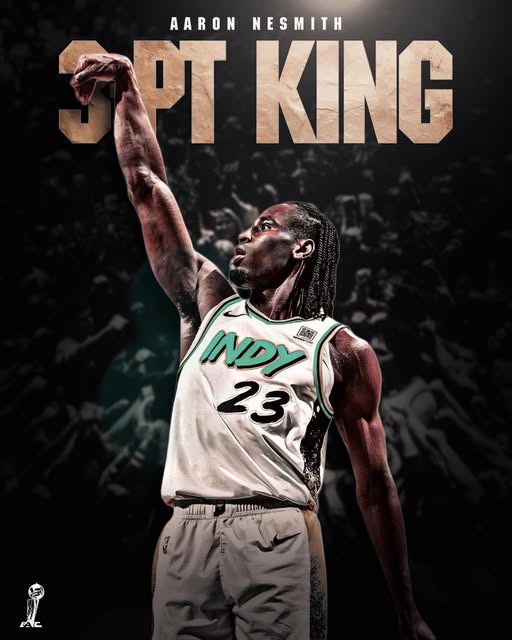Aaron Nesmith may not be the first name that comes to mind when you think of all-time NBA greats. He isn’t a four-time MVP like LeBron James, he hasn’t won five championships like Kobe Bryant, and he doesn’t carry the historic sharpshooter legacy of Reggie Miller. But in a surprising twist that speaks volumes about the evolution of the modern game, Nesmith has now hit more three-pointers in a single NBA Finals series than all three of those legends ever did. This is not a misprint. Not a fluke stat. Not even a quirky piece of trivia tucked away in a postgame notes section. This is real. And it’s one of the most eye-opening developments in recent NBA postseason history.
How does a player like Aaron Nesmith, a role player who has never been the face of a franchise, surpass three of the greatest players the game has ever seen in one of the most crucial and high-pressure categories in the sport? The answer lies in a perfect storm of opportunity, timing, team fit, and the radically changed philosophy of how basketball is played and prioritized in the modern era.
Nesmith entered the league as a mid-first-round pick in 2020, drafted 14th overall by the Boston Celtics out of Vanderbilt. Known for his shooting stroke and work ethic, he never quite broke into stardom in Boston but continued to develop as a reliable role player. It wasn’t until a trade sent him to Indiana that his game truly blossomed. With the Pacers, Nesmith found freedom—both in minutes and role—that allowed him to lean into what he does best: shoot the basketball.
Fast forward to this year’s NBA Finals, and Aaron Nesmith is not only playing meaningful minutes, he’s thriving in them. With defenses focused on Tyrese Haliburton and Pascal Siakam, and with Indiana pushing the tempo and prioritizing spacing and threes, Nesmith has been unleashed. He has taken and made more three-pointers in this Finals series than LeBron James ever did in any of his ten Finals appearances. More than Kobe Bryant did across seven trips to the championship round. More than Reggie Miller—an icon of 90s three-point shooting—ever had a chance to log, having never played in an NBA Finals series himself.
The sheer fact that Nesmith’s name now lives in that kind of statistical territory should be a wake-up call about how much the NBA has changed. The Finals used to be a slugfest of post play, mid-range jumpers, and isolation brilliance. Now, it’s a showcase of perimeter fluidity, transition speed, and catch-and-shoot efficiency. Nesmith, whose career to this point has been marked by steadiness rather than stardom, has seized the moment.
And yet, it’s not just about the numbers—though those numbers are staggering. It’s also about the stage. The NBA Finals has long been where reputations are made and legacies cemented. Every shot is magnified, every possession a pressure cooker. To shoot the three-ball at a high volume and clip in that setting is an entirely different beast than doing it in a regular-season game in February. Nesmith has not only risen to that challenge—he’s thrived in it.
That doesn’t mean Nesmith is about to walk into Springfield or be immortalized in the same breath as Kobe, LeBron, or Reggie. Context matters, and no one is pretending he’s suddenly a better overall player than those three. But what this moment reveals is just how dramatically roles and expectations have shifted in today’s NBA. A player like Nesmith, who in earlier eras might’ve been a seventh or eighth man specializing in corner threes and defensive hustle, now finds himself as a central figure in a Finals rotation. His willingness to shoot, and to hit at high efficiency, is not just a bonus—it’s a necessity for Indiana’s offense to hum at full throttle.
What’s most fascinating about this stat is how it highlights the confluence of evolution and opportunity. LeBron James, for all his greatness, played in an era where the three-point shot was important but not yet king. Kobe Bryant made a living in the mid-range and was a killer in the post—tools that defined his era but don’t fill the stat sheet from behind the arc. Reggie Miller was a pioneer, no doubt, but he simply didn’t have the Finals stage or the volume of attempts that modern shooters enjoy today. Nesmith, on the other hand, is playing in a system where launching threes is not just allowed—it’s encouraged. Encouraged to the point where he can casually drop six or seven in a game and it barely registers as a shock.
This isn’t to diminish what Nesmith has accomplished. On the contrary, it should amplify it. Plenty of players in today’s league have the green light. Few have the nerve, the rhythm, and the precision to cash in when it matters most. Nesmith has done that, and in doing so, he’s added a surprising new line to his resume: more Finals three-pointers than LeBron, Kobe, and Reggie.
Perhaps what makes this development even more compelling is the journey Nesmith has taken to get here. He’s not a highly touted number-one pick. He didn’t come into the league with global hype or multimillion-dollar endorsement deals. He’s grinded. Quietly. Diligently. Earning his way into rotations, sacrificing for the team, and always staying ready. His Finals breakout didn’t happen because he suddenly transformed into Stephen Curry. It happened because the moment arrived—and he was ready for it.
And that’s really the heart of the story. In an NBA landscape filled with stars, max contracts, and larger-than-life narratives, there’s still room for a player like Aaron Nesmith to make history. His rise is a reminder that impact doesn’t always come from the most expected sources. Sometimes, it comes from a player who embraces his role, trusts his preparation, and finds his rhythm on the league’s biggest stage.
It’s also worth pondering what this means moving forward. Has Nesmith hit his ceiling, or is this just the beginning of a new chapter in his career? Is this an outlier series, or a sign that he’s ready to be a consistent threat from deep in high-stakes situations for years to come? One thing is certain: defenses will have to start game-planning for him differently now. No longer can he be the “other guy” left open in the corner. He’s shown that he can burn you—repeatedly—if you don’t respect his shot.
Basketball history is built on both greatness and moments. Aaron Nesmith, in this Finals series, has etched his name into the moment. More threes than LeBron. More than Kobe. More than Reggie. That sentence, even now, feels like fiction. But it’s fact. And it’s one that will stick, not just as a statistical quirk, but as a symbol of how the NBA’s present can sometimes redefine our perspective of the past.



